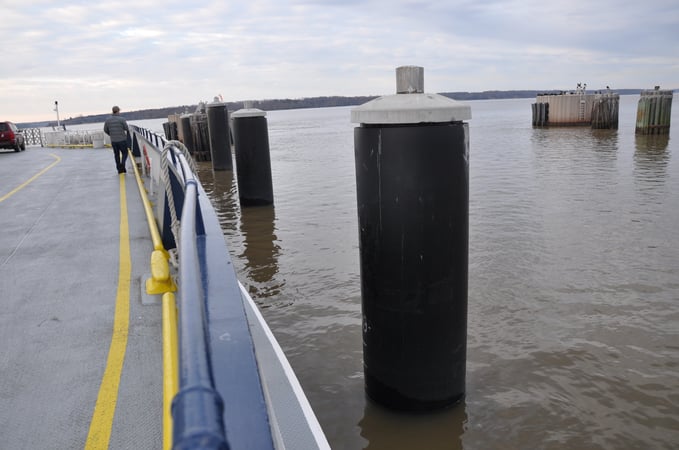
For a growing percentage of commuters, commuting by ferry is dependable to get between points a and b - Ferry operators who transport passengers and vehicles across rivers, bays and ports all across the United States know it. In fact, data shows that ferries help transport over one hundred million people and over twenty million vehicles yearly.
Often missed on the ride are structures placed in the water to act as guides or buffers between the ferry vessel and the dock. Traditionally wood, concrete and steel would create these structures or guides for the ferry to prevent damage to the dock and vessel. However, if made of traditional materials, these structures can be stiff or rigid, which often creates rough docking, damage to the ferry and a bump or jolt to mark the end of their passage. In addition, over time, water damages wood, concrete and steel as these structures tend to corrode in marine environments, and routine repairs and even total replacements can be costly.
So, when ferry owners are looking for a replacement, they often look for a low-maintenance solution that provides more energy absorption to replace aging guidewalls, dolphins and log camels.
Fiberglass Reinforced Polymer (FRP) aka composite materials offers incredible design flexibility. The corrosion resistance of FRP makes it a robust alternative for harsh marine environments. FRP guidewalls, dolphins and log camels are designed to bend instead of break when it comes to the inevitable impact of ferries. Our FRP products offer the strength of steel with a lower bending stiffness which allows for improved energy absorption over traditional materials.
In addition, FRP can reduce damage to the ferry and dock and significantly reduce the maintenance costs caused by collision damage and wear to the guidewalls, dolphins and log camels. By creating a softer impact, FRP can improve the safety and comfort of passengers on the ride, offering them a smoother commute.
If you need to replace an aging waterfront structure, contact us with any questions or comments you may have!
